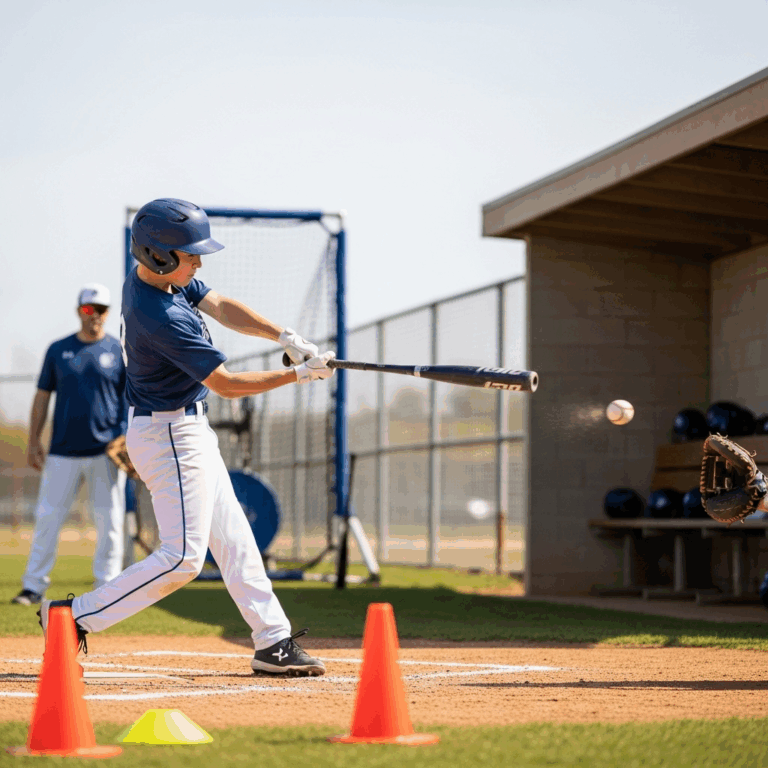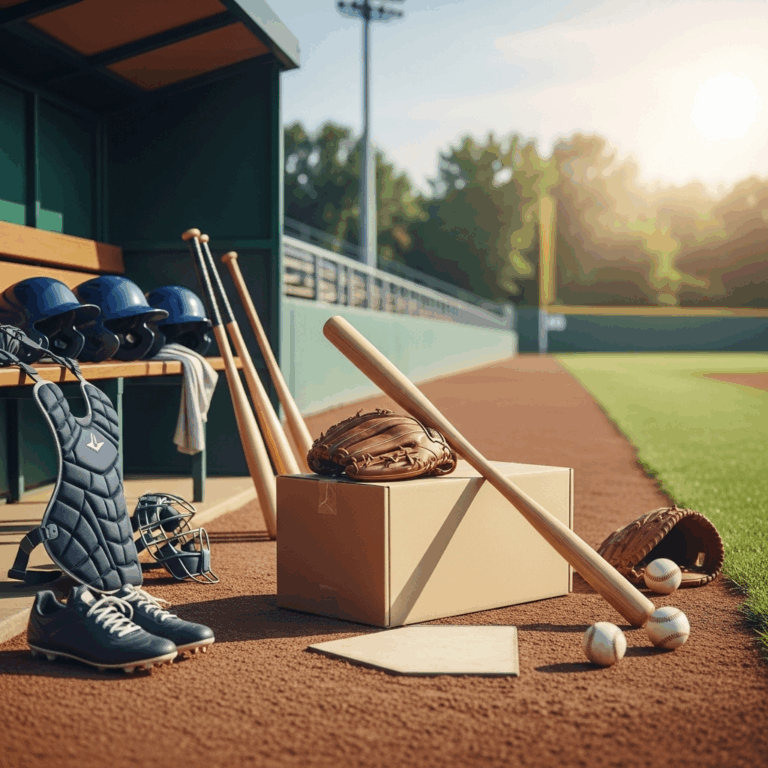Baseball players report for spring training based on their league and team schedule, typically starting in mid-February for pitchers and catchers and a few days later for position players.
Stepping onto the diamond for the first time each season can feel like a thrilling fresh start. But if you’re new to the game, or perhaps helping a young player navigate the world of baseball, you might be wondering: when exactly do baseball players report for spring training? It’s a question that pops up every year, often leaving aspiring athletes and their families a little confused about the exact dates. Don’t worry, we’re here to break it all down! Knowing these key dates ensures you’re ready for evaluation, practice, and getting in that crucial early work. Let’s explore the typical reporting timelines and what you can expect as spring training gets underway.
Understanding Spring Training: More Than Just Warm-Ups
Spring training isn’t just a casual gathering; it’s the official kickoff to the professional baseball season for Major League Baseball (MLB) teams. It’s a vital period where players, both new and returning, shake off the offseason rust, hone their skills, and impress coaches. For new players, it’s an opportunity to prove they belong, while veterans use it to prepare their bodies and minds for the grueling 162-game regular season. Understanding the reporting schedule is the first step in preparing yourself or your young athlete for this exciting phase of the game.
The Official Timeline: When Pitchers, Catchers, and Everyone Else Arrives
While the exact dates can shift slightly year to year based on the MLB schedule, there’s a general pattern for when different groups of players report for spring training. This structured arrival allows teams to focus on specific needs at different times.
The Early Birds: Pitchers and Catchers
Pitchers and catchers are typically the first to report, usually a few days before the rest of the team. This is because their roles often require more specialized conditioning and arm care to prepare for the demands of throwing and squatting for extended periods. They need a bit more runway to get their arms in shape and their bodies ready for the intense activity.
- Why they report first: To gradually ramp up throwing programs and prevent arm injuries. This allows them to build arm strength and endurance safely.
- Typical reporting window: Mid-February, often around the second week of the month.
- What happens initially: Players undergo physical evaluations, participate in team meetings, and begin light throwing and conditioning drills.
The Main Crew: Position Players
A few days after the pitchers and catchers arrive, the rest of the team – the position players – report for duty. This includes infielders, outfielders, and any other non-pitching roster members. They also have their own set of preparations to undergo.
- Why they report later: They’ve often been working on their hitting, fielding, and base-running conditioning throughout the offseason. While they still need to integrate with the team, their specific needs differ from the pitchers’ initial ramp-up.
- Typical reporting window: Usually within a week to ten days after pitchers and catchers, often around the third week of February.
- What happens: Similar to pitchers and catchers, they undergo physicals, attend meetings, and begin team practices, including batting practice, fielding drills, and scrimmages.
The Draft Picks and International Signings
For players newly drafted by a team or international prospects who have just signed, their reporting timeline can be a bit more flexible. They might join their assigned spring training facility shortly after signing or be invited to participate in specific development programs.
Minor League Players
Players in minor league organizations typically have their own spring training schedules, which may run concurrently with or slightly after the major league camps. These camps are crucial for developing talent and giving prospects a chance to showcase their abilities for potential call-ups.
What Happens During Spring Training?
Once players report, spring training is a whirlwind of activity designed to get everyone game-ready. It’s a comprehensive process that goes far beyond just playing exhibition games.
Physicals and Assessments
Upon arrival, every player undergoes thorough physical examinations. This is crucial for identifying any lingering injuries from the previous season or any new issues that need attention. Coaches and medical staff assess strength, flexibility, and overall physical readiness.
Team Meetings and Strategy Sessions
Players participate in meetings to discuss team goals, strategies for the upcoming season, and any new rules or expectations. Coaches will outline their vision for the team and individual player development.
Drills, Drills, and More Drills
This is the core of spring training. Players engage in a wide array of drills designed to sharpen their fundamental skills:
- Pitchers: Focus on bullpen sessions, long toss, fielding drills, and pitching under simulated game conditions.
- Catchers: Work on receiving, blocking, throwing accuracy, and managing the game from behind the plate.
- Infielders: Practice ground balls, double plays, footwork, and throwing accuracy.
- Outfielders: Concentrate on fly balls, making strong throws to bases, cutting balls off, and tracking the ball in the air.
- Hitters: Engage in batting practice, tee work, and situational hitting drills.
Intersquad Games and Scrimmages
Early in spring training, teams often play “B” games or intersquad games. These are informal contests between players on the same team, allowing them to get live at-bats and experience game situations without the pressure of an official game. Later, ” Grapefruit League” (Arizona) and “Cactus League” (Florida) games begin, where teams play against other MLB clubs in an exhibition setting.
Evaluating Talent: The Competition for Spots
For players on the bubble, or those trying to make a name for themselves, spring training is their showcase. They compete for roster spots, aiming to show coaches they have the skills, consistency, and grit to play at the next level. Rookies, prospects, and even established players fighting for a starting role will be under intense scrutiny.
Location, Location, Location: Where Does Spring Training Happen?
Spring training takes place in two primary regions in the United States, each with its own unique atmosphere and climate:
Florida: The Grapefruit League
Home to many of the Eastern and Central-based MLB teams, the Grapefruit League is played across Florida. The warm weather provides ideal conditions for players to prepare. Teams are spread out across the state, leading to a variety of road trip possibilities for fans.
Arizona: The Cactus League
The Cactus League hosts the Western and some Central-based MLB teams in Arizona, primarily in the Phoenix metropolitan area. Known for its dry heat and stunning desert landscapes, it offers a condensed geographical area for fans to see multiple teams play.
Preparing for Spring Training: What Players Need
Reporting for spring training means being prepared both physically and with the right equipment. Even at the beginner level, having the appropriate gear can make a significant difference in comfort and performance.
Essential Baseball Gear
Every player needs a core set of equipment. For those just starting, understanding what’s essential is key:
- Glove: A properly fitted baseball glove is paramount for fielding. Beginners often benefit from gloves that are a bit more forgiving and broken-in.
- Bat: While teams provide bats, players may have their preferred models for practice. Ensure any personally used bat meets league regulations. For youth leagues, understanding bat drop and material composition is important.
- Baseball Pants and Uniform: Comfortable, durable pants and a jersey are necessary for practice and games.
- Cleats: Essential for traction on the field. Molded cleats are generally recommended for younger players to reduce the risk of injury compared to metal cleats.
- Helmet: A batting helmet is non-negotiable for safety during batting practice and games.
- Catcher’s Gear (if applicable): If a player is a catcher, they’ll need a mask, chest protector, leg guards, and a specialized catcher’s mitt. Ensuring a proper fit is crucial for protection and mobility.
- Training Equipment: Things like resistance bands, weight training equipment, and agility tools can be used for individual conditioning.
Physical Conditioning
Players should arrive at spring training in good physical shape. This usually involves:
- Cardiovascular Endurance: Running, interval training, and other aerobic activities to build stamina.
- Strength Training: Focusing on core strength, legs, and upper body to improve power and prevent injuries.
- Flexibility and Mobility: Stretching and dynamic warm-ups to improve range of motion and reduce the risk of strains.
For a deeper dive into some of these training aspects, resources like MLB’s official player development resources offer excellent insights.
Factors Influencing Reporting Dates
While the mid-February timeline is standard, a few factors can cause slight variations:
- The MLB Schedule: The timing of the World Series can sometimes push back the start of spring training if it extends exceptionally late into the fall.
- Collective Bargaining Agreements (CBAs): Negotiations between MLB and the Players Association over the CBA can impact reporting dates and the overall structure of spring training.
- Team-Specific Needs: Occasionally, a team might adjust reporting dates slightly to accommodate specific training camps or player evaluations.
Spring Training for Youth Baseball
For younger players in Little League, travel ball, or high school baseball, the concept of “reporting for spring training” usually refers to the start of team practices after the offseason. These dates are determined by the league or team schedule, but the principles of preparation remain the same.
Youth teams typically begin practices in late February or early March, depending on weather and league rules. It’s a time for coaches to assess talent, teach fundamentals, and build team chemistry. Parents and young players should look for announcements from their respective leagues or teams regarding the official start of practices.
Frequently Asked Questions (FAQ)
Q1: When do pitchers and catchers usually report for MLB spring training?
Pitchers and catchers are typically the first to report, arriving in mid-February, usually within the first two weeks of the month.
Q2: When do position players report for MLB spring training?
Position players generally report a few days after the pitchers and catchers, often around the third week of February.
Q3: Are the spring training dates the same every year?
The dates are usually very similar each year, but they can shift slightly based on the overall MLB schedule and any new collective bargaining agreements.
Q4: What is the difference between the Grapefruit League and the Cactus League?
The Grapefruit League is played in Florida, while the Cactus League is played in Arizona. Both are exhibition seasons where MLB teams prepare for the regular season.
Q5: What should a beginner baseball player bring to their first spring training practice?
A beginner should bring their glove, a batting helmet, cleats, comfortable athletic wear (including baseball pants), and a water bottle. If available, a personal bat but teams usually provide them.
Q6: Why do pitchers and catchers report before position players?
This allows them to gradually rebuild arm strength and conditioning for pitchers and prepare their bodies for the physical demands of catching, reducing the risk of injury.
The Road to the Regular Season Starts Here
Understanding when baseball players report for spring training is more than just knowing a date on a calendar; it’s about recognizing the structured, deliberate process that prepares athletes for the demands of a long season. From the initial physicals and team meetings to the intense drills and exhibition games, spring training is a multifaceted period of evaluation, development, and preparation.
Whether you’re a player aiming for the big leagues, a parent supporting a young athlete, or a coach guiding your team, this essential guide should help demystify the reporting process. Knowing these timelines empowers you to be ready, to understand the commitment involved, and to appreciate the dedication it takes to step onto that field on opening day. So, whether it’s mid-February for the pros or early March for your local youth league, the spirit of spring training is about renewal, hard work, and the exciting anticipation of a new baseball season. Get ready to play ball!


